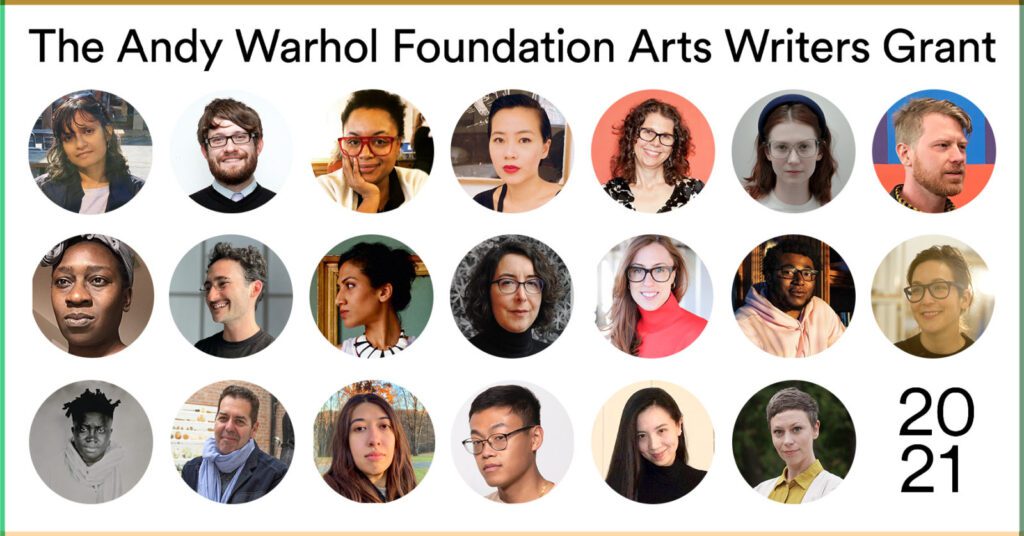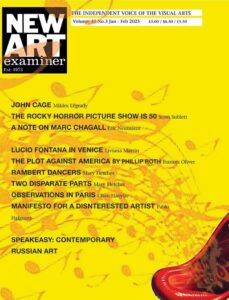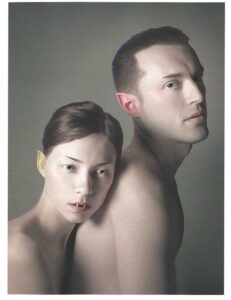

Judgment
We mustn’t judge. This is what we are taught. But the directive is a misplaced affectation based on a few hundred years of superficial civilizing. It is our primeval nature to judge, as all animals must. If we didn’t, we wouldn’t survive long; we’d make decisions that would sooner rather than later, cause us to fail catastrophically. Calamities happen when judgment is absent, or falters. Away from immediate danger, there also wouldn’t be art criticism. There would be no distinction or commentary, no dialog, no disagreement—at least of any import—and ultimately, no chance of art nudging society towards resolution on issues that so many artists claim is their intention.
Exercising judgment is understood to mean deploying it sensibly, or to one’s benefit. It could also mean the maintenance of its health. As a body requires exercise to stay fit, judgment needs to be worked out too, even if in doing so we all pull a muscle occasionally. But judgment can also be unhelpful, or pointless, if not fastened to loftier outcomes—understanding, education, betterment. Without aspiration, judgment remains in its malnourished, reactive state—opinion.
Thought vs Opinion
It is commonly asked why a critic’s opinions should be heeded above those of others. They shouldn’t. Opinions are a great leveler; everyone has them. They form almost unthinkingly when an artwork impacts one’s appetites, aesthetics, and prejudices.
To criticize art (or its systems) effectively a critic needs to vivisect those initial impulses—or at least sublimate them—by setting a larger framework of relatable, dispassionate consideration, beyond one’s own concerns. The results of that thinking, are to be conveyed in specific selections of words, composed into efficient sentences, then accurate paragraphs, that raise justifiable points, or suggestions, to foment discourse, excavate cultural problems, or build community. No one fueled on raw opinion alone can accomplish this. However, allied with insight, and cleaved from self-service, advancement might be achieved, or differences bridged. But to bludgeon with one’s opinion is to spoil that process before it begins.
This distinction matters because it is the difference between ego, and generosity of thought; between self-aggrandizing posturing, and pushing for the fullest realization of art’s potential. There is no more grotesque an example of a writer’s shortcomings than leaning overmuch on the pronouns “I” and “me”. It locates an article’s center of gravity so narrowly, so greedily within the writer—instead of moving it outward to include his audience—that it becomes isolated, rather than contributory. Such possessiveness suggests a lack of humility, roundedness, and awareness. It is difficult not to employ those words, because after all, one is presenting one’s position, but criticism is more effective when the text is less about its author, and more for the reader. A critic’s ego, ought not arrive before his words. Be especially aware when an article actually begins with “I,” for what follows is doomed. Neither is there much room in legitimate criticism for “feelings” that might be evoked by an artwork. They are unreliable, and personal to one’s experiences. Their inclusion thins an article’s authority, risking sentimentality and literary sag. Feelings must be stringently monitored by objectivity.
Art Writing vs Art Criticism
The term “art writing,” sounds academic, positive, kind—or castrated, benign, and toothless. Deficient art can’t be killed with kindness, but it must be killed, especially when its makers gain undeserved prominence for market, or nepotistic reasons. Art writing is the act of conveying art criticism, which by definition needs to be ruthless at times. It has to be both midwife and mortician. Art writing is merely the chauffeur of art criticism. Without its silver-tongued passenger, it is voiceless.
Critics often end up writing about art, rather than writing criticism. Like artists, most critics have to hustle for jobs and opportunities. These concerns might blunt courage, and focus attention only on work that is received positively. It may seem wise, or safer, not to savage a broken-down exhibition at an influential gallery. There is a general tendency toward leniency even when it isn’t merited, and to describe or hedge, rather than burn and deforest. It may seem gratuitous to name names and shred arrogance or incompetence, but in avoiding the poisons infecting the art world, critics fail in their most pressing duties. It’s right there in the job title; “a person who judges, evaluates, or criticizes.”
Pace, Distance, and Time
Time spent away from an article or essay, is just as important to the final product as writing it. It allows for the words to find their places on the page, and for them to conspire, away from the gaze of their conductor. Sometimes words need time to decide that they don’t belong in a given context at all. They will return later, when they are needed on the frontlines of another article. Words have lives and compulsions of their own, and they don’t always play well with others. They need less to be written down, than to be left to find their own way to the most appropriate argument. They know what they are doing, and a critic must learn to trust them. Art criticism is at its best when it isn’t worried or corralled to a hasty climax. But the rabid pace of online publishing, the competition to make a statement first, and the quantity of events to be covered, reduce the chances of fair writing becoming great, or bad writing being held accountable and kept from publication. This is a challenge because deadlines approach faster, as they near; and because thoughtfulness, research and percolation are not conducive to “top ten” lists, “must see” urgings, frenzied art fair coverage, or reporting on this week’s volley of new shows. The autonomy and instincts of words themselves, are too often diminished in the scrum. But if a critic listens carefully, she can learn to communicate with words, and not only through them.
Quality vs Quantity
The internet has increased the quantity of art criticism, or more accurately, it has increased the quantity of degenerate art criticism. An artist or gallery might prefer a deeply engaged audit, by a gifted reviewer, in a rigorously edited, revered print publication—over sloppy tumblings, in an overbearing, poorly edited internet “forum,” spewed out over a couple of days. But, in terms of propagandizing, both can generate interest and return. While there remains a critical hierarchical structure that distinguishes prestige—or the lack thereof—between titles, increasingly it seems that artists are concerned with just getting mentioned, somewhere, anywhere, as much as they are with what is actually said about the work. A remark, a sentence, or a full-throated inspection, have a superficial equality of currency when it comes to dissemination online. Any recognition, however enfeebled, can be condensed into a screenshot image, resized, and cropped to Instagram’s required dimensions. The aim in sending this signifier out into the world is to prove that one was acknowledged, and for a moment, raised above the drowning mass of anonymous exhibitions. Is there a risk that the distance between substantive analysis, and shallow fluff, will collapse as both are parlayed into digestible social media soundbites? There’s a danger that the content of criticism will come to matter just us much as it doesn’t.
Artists then, reduce the focus on, and the demand for, worthwhile assessment, when they traffic in a black market supply of inferior scraps, out of desperation (however understandable) to be seen. But until artists reject the substandard—perhaps foregoing instant gratification—and have the confidence to expect the most perceptive scrutiny, they surely won’t receive it.
As you next sift through the torrent of descriptions; press release rewrites; rambling, unfocused egotism; belligerent opinion; and screaming headlines, take a moment to regard the great irony, that today there is comparatively little art criticism, despite, or in fact because of the great number people trying to write it. True criticism can matter, because it will discern rot; finesse an artist’s visual apparatus; confirm strengths, and reveal weaknesses; trim excess; and elucidate the artist’s connections to larger enterprises. This depth of engagement cannot be achieved by all critics, or by any critic, but by the right critic for any given work. It is thrilling to discover, and exceedingly, increasingly, difficult to find.
Darren Jones is a Scottish, United States-based art critic.
This article is part of a project supported by the Creative Capital | Andy Warhol Foundation Arts Writers Grant Program

